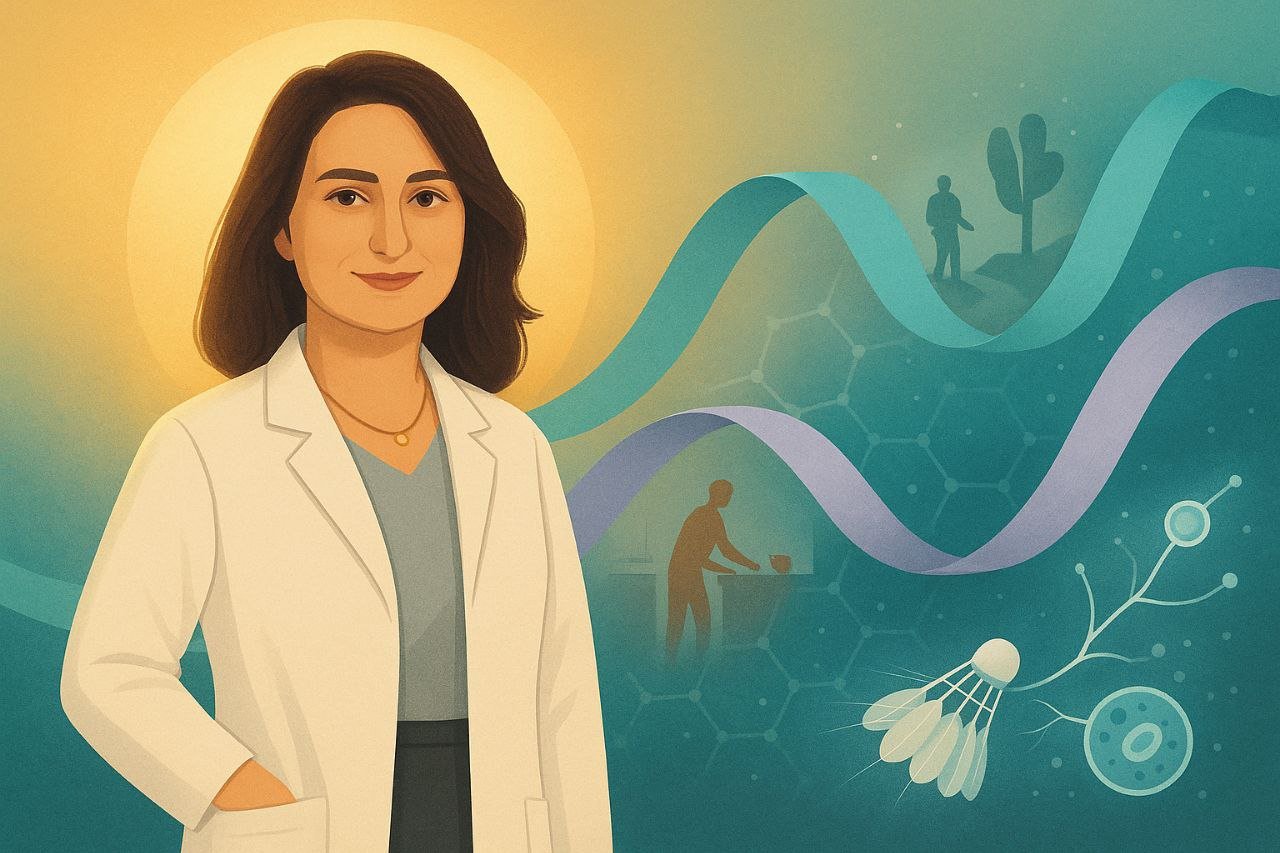A Diagnostic Odyssey with Ehlers-Danlos Syndrome
We were never meant to navigate life’s toughest challenges alone. Especially when it comes to our health. Yet, for countless individuals living with rare diseases or chronic conditions, the path to understanding and support can feel incredibly isolating. Dr. Sadaf Ashtari, Associate Professor and researcher, shared her powerful story that resonates deeply with our core mission: to ensure no one has to face their health challenges in solitude.
A 15-Year Wait for Answers
Dr. Ashtari’s journey began at age 15, playing badminton when her shoulder unexpectedly dislocated. Doctors dismissed it. “They just said okay your shoulder dislocated,” she recalls. But it kept happening. Again and again. The prevailing message? “This is who you are,” perhaps even, implicitly, “it’s in your head.” For over 15 years, spanning continents from Iran to the US, she lived with recurring dislocations and chronic pain, often feeling unheard and invalidated, even by those closest to her.
Like many navigating the labyrinth of unexplained symptoms, Dr. Ashtari faced the frustrating reality of an invisible illness. “You have some good days and you have some bad days,” she explains. Friends might see her hiking one day, questioning why she couldn’t keep up the next. The pressure to appear “normal,” coupled with the lack of a diagnosis, led to moments of quiet suffering, like sitting on the street during a walk with friends, too embarrassed to admit the severity of her pain.
It wasn’t until 2017, after moving to California and connecting with a knowledgeable geneticist at Kaiser, that she finally received a name for her condition: Ehlers-Danlos Syndrome (EDS), specifically the hypermobility type (hEDS). It’s a genetic connective tissue disorder, and for her type, diagnosis relies on clinical examination, not a simple DNA test, adding another layer of complexity.
From Isolation to Insight: The Search for Community
The diagnosis was a turning point, but also the start of a new challenge: figuring out how to live with EDS. Her geneticist suggested online communities. Dr. Ashtari dove in, eager to connect with others who understood. What she found, however, was often discouraging. “Most of them were through all these negativity… how miserable they feel… how they are in pain all the time and they cannot do anything about it,” she shared. “Honestly, it didn’t give me that feeling that I was looking for… I wanted a solution.”
This experience sparked a research idea. Fueled by her background in information systems and her lived experience, Dr. Ashtari secured a grant to study the needs of EDS patients. Were her frustrations unique, all in her head? Her interviews revealed a profound, collective sense of being unheard by the medical establishment. Patients described feeling like “nomads” without a medical home, often educating their own doctors, piecing together information from scattered online sources, and desperately seeking validation and practical coping strategies.
“No one told me that my doctor understands me… they hear me… they are helping me,” Dr. Ashtari noted about her research participants. Instead, patients relied heavily on self-education and peer support, navigating a fragmented landscape of information, some helpful, some inaccurate, much of it disorganized. They craved a centralized, trustworthy space offering not just information, but also structured support based on specific symptoms (shoulder, hip, wrist) and solution types (medication, physical therapy, equipment, diet, emotional coping).
Building a Better Path Forward: Community, Technology, and Hope
Dr. Ashtari’s journey and research underscore the vital need for platforms like March. Her vision for a patient-centric online community – one focused on reliable information, shared solutions, genuine empathy, and empowerment – aligns perfectly with what we are building. A place where people feel seen, heard, and connected. Where trustworthy health information, community-driven insights, and AI-assisted tools converge to light the path forward.
While Dr. Ashtari sees the potential for AI to help organize vast amounts of medical information and she also emphasizes that technology alone isn’t the answer. The “human touch,” the empathy, the shared understanding found in genuine community, remains irreplaceable. March is committed to fostering that kind of connection, using technology as a tool to enhance, not replace, the human element.
We believe, like Dr. Ashtari, in the power of shared stories and collective wisdom. We’re building a space where vulnerability is met with understanding, where practical tips are exchanged freely, and where every member feels empowered to manage their health journey with confidence and support.
Learn More From Our GenAI x Rare Disease Event
Dr. Sadaf Ashtari was one of several inspiring speakers at our recent GenAI x Rare Disease event held at UC Berkeley. The day was filled with insightful discussions and collaborative problem-solving focused on exploring the potential of technology to improve the lives of those affected by rare conditions.
Dr. Ashtari’s story is a powerful reminder that while the healthcare journey can be complex and isolating, connection and knowledge are potent medicines. By building communities grounded in trust, empathy, and shared purpose, we can create a future where everyone feels supported and empowered on their path to better health. You are not alone.
